Kingdom Animalia Family Synbranchidae Scientific name Monopterus albus Higher classification Monopterus | Order Synbranchiformes Genus Monopterus Phylum Chordata Rank Species | |
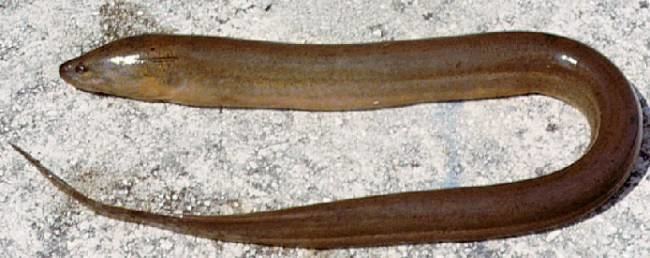 | ||
Similar Pond loach, Eel, Grass carp, Snakehead murrel, Garlic chives | ||
Asian swamp eels in silver lake
The Asian swamp eel, swamp eel, rice eel, or white ricefield eel(Monopterus albus) is a commercially important, air-breathing species of fish in the Synbranchidae family. Originating in the waters of East and Southeast Asia, it has been identified as an invasive species in the North American Everglades.
Contents
- Asian swamp eels in silver lake
- Asian swamp eel fishing easy tips
- Taxonomy and evolution
- Characteristics
- Life history
- Lifecycle
- Distribution and habitat
- Native habitat
- Nonnative habitats
- Control
- Cuisine
- Disease
- References
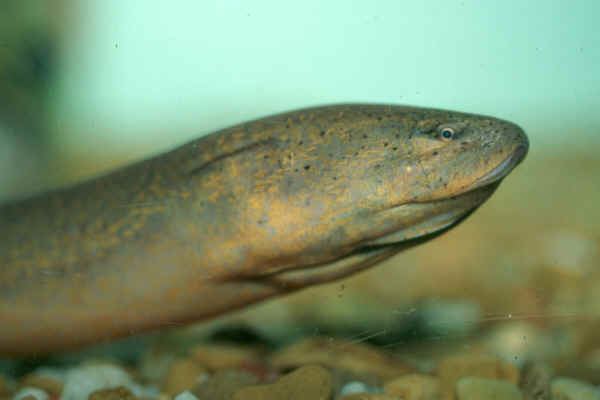
Asian swamp eel fishing easy tips
Taxonomy and evolution
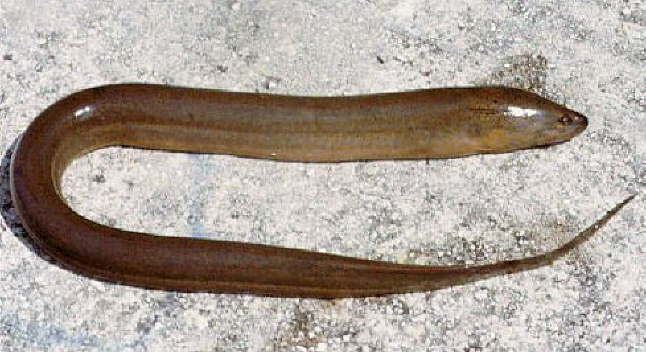
The Asian swamp eel is a freshwater eel-like fish belonging to the family Synbranchidae. This family is native to the fresh, brackish, tropical, and subtropical waters of Asia, but is now present in West Africa and North, Central, and South America. Its taxonomy, however, is incorrect. Though Monopterus albus was initially thought to be a single species, four known populations of the “species” in the southeastern United States may actually be three distinct species or taxa, each originating from a different area in Asia. Monopterus albus is placed in the class or subclass Actinopterygii. It arose from the Osteichthyes, the first bony fish, whose fossil record dates back to the Triassic period. In turn, the bony fish came from the Acanthodii class of bony and cartilaginous fish. The common name of M. albus is somewhat of a misnomer, as the Asian swamp eel is not an eel, per se. Eels are of the order Anguilliformes, while M. albus is of the order Synbranchiformes.
Characteristics

The Asian swamp eel has a scaleless, anguilliform (snake-like) body that grows to a meter or less, typically 25 to 40 cm as an adult. As a swamp eel, it has a tapering tail and blunt snout, and lacks pectoral and pelvic fins. The dorsal, anal, and caudal fins are rudimentary, with the caudal fin often absent. These fins serve to protect the swamp eel against rolling, and assist in sudden turns and stops. Its gill membranes are fused, but one v-shaped gill is located beneath the head. Such a shape prevents reverse flow. Its body and head are dark, with dark olive or brown dorsal coloring and light orange ventral coloring. This coloration camouflages the aquatic predator; however, some are brightly colored with yellow, black, and gold spots.
The mouth is large and protractile, and both upper and lower jaws have tiny teeth for eating fishes, worms, crustaceans, and other small aquatic animals at night.
Life history
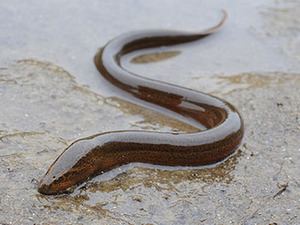
M. albus is an evasive nocturnal animal. Its diet includes other fish, shrimp, crayfish, frogs, turtle eggs, aquatic invertebrates such as worms and insects, and occasionally detritus. Unlike the traits of its diurnal counterparts, M. albus life history traits (e.g. absolute density and survival) are difficult to measure accurately and can require decades of data to detect trends, as expressed by the lack of data available on the topic. This results in an increase in the population of the invasive species without adequate time for population control methods. Hence its wide distribution.
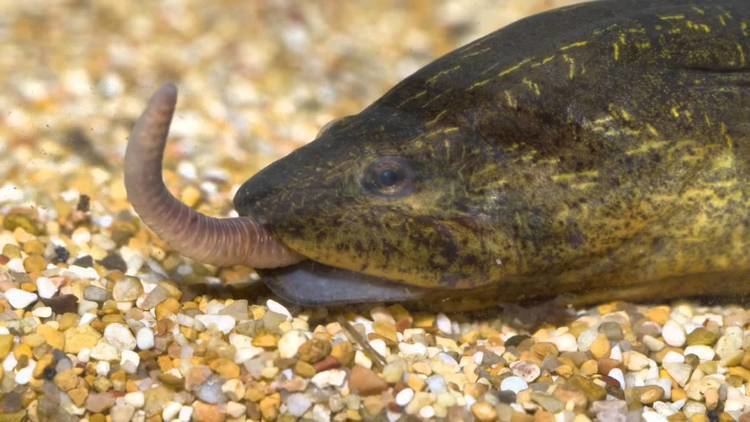
The Asian swamp eel has versatile motility and is even capable of moving over dry land for short distances. This behavior is used for relocation according to resource availability. In the absence of water and food, the Asian swamp eel is able to survive long periods of drought by burrowing in moist earth. If its home becomes unsuitable, M. albus simply crawls ashore and makes its way to a more suitable home by slithering over the land in a snake-like fashion. These characteristics enhance its ability to disperse widely. The swamp eel is a voracious general predator, making it a threat to native fishes, amphibians, and aquatic invertebrates.
The survivorship of a species or cohort can be found by calculating the number or proportion of individuals surviving at each age. Type I survivorship is characterized by high survival in early and middle life, followed by a rapid decline in survivorship in later life because of physiological changes. Type II survivorship exhibits a constant mortality rate regardless of age because of consistent environmental threats. M. albus survivorship falls between Type I, physiological, and Type II, ecological. They exhibit a great deal of parental care, indicative of physiological survivorship. Large males construct bubble nests at the mouth of burrows and guard the eggs and young. Additionally, eel populations are dependent upon resource abundance, making their survivorship partially ecological.
Lifecycle
The Asian swamp eel is hermaphroditic. All young are females. As juvenile fish begin to mature, some take on the masculine phenotype. Males are capable of changing sex, allowing them to replenish female populations when female densities are low. This change from one sex to another can take up to a year.
Spawning can occur throughout the year. Eggs are laid in bubble nests located in shallow waters. These bubble nests float at the water’s surface and are not attached to aquatic vegetation. Females produce up to 1,000 eggs, each, per spawning event.
Distribution and habitat
M. albus is native to the tropical and subtropical areas of northern India and Burma to China, Asiatic Russia, Japan, and Indo-Malayan Archipelago. It is one of the common fish found mainly in Asia, from India, Southern China to Malaysia and Indonesia. The fish is an important protein source for people in the northeastern part of Thailand. In Asia, the swamp eel is wide-ranging, occurring in both tropical and temperate climates. Swamp eels live in ditches, ponds, streams, and rice paddies.
Native habitat
The preferred environment for the Asian swamp eel includes a wide variety of freshwater-like shallow wetlands, stagnant waters, marshes, streams, rivers, ditches, canals, lakes, reservoirs, and ponds. While they prefer fresh water, they are also able to tolerate brackish and saline conditions, as seen in their colonization of American marshlands. Depths of less than 3 m are optimal. M. albus also easily tolerates cold temperatures — well below 0 °C - and a wide range of oxygen levels. This fish can obtain up to 25% oxygen from air cutaneously if not using gills underwater. Factors that typically limit dispersal — temperature, oxygen, and salinity — do not limit the Asian swamp eel.
Nonnative habitats
The Asian swamp eels were first introduced to the Hawaiian Islands around 1900. Locations in the southeastern United States were not colonized until the end of the 20th century. As early as 1990, Asian swamp eels were introduced to several ponds at a nature center near Atlanta, Georgia, within the Chattahoochee River drainage basin; individuals have since migrated to an adjacent marsh of the Chattahoochee River. As a general predator, the Asian swamp eel has disrupted the ecological balance of the Everglades. In 1994, eel specimen were collected in ponds at the Chattahoochee Nature Center north of Atlanta. Subsequently, eels were collected from Florida waters in 1997 at two widely separated areas: one in southeast and the other in west-central Florida. Tens of thousands of swamp eels are estimated to inhabit nearly 55 miles of two water canal systems in southern Florida, one in the North Miami area and another on the eastern side of Everglades National Park. Two other populations of the eel have been discovered since 1993: one outside of Tampa, Florida, and one in southern Georgia near the Chattahoochee River. One or more of the populations are believed to be the result of an intentional or accidental release of the creature from a home aquarium or fish farm. Some populations may have been the result of an attempt by a few local residents to establish the eels as a food source. Asian swamp eels pose a threat to the homeostasis of Everglades National Park by disrupting the natural interactions between native species and their environment. The species has an incredible ability to survive in adverse conditions, and the Everglade food web presents no known natural predators. Swamp eels survive even in the dry season when other non-native species normally die. To combat Asian swamp eel resilience, the American Fisheries Society is investigating methods for control, containment, and possible eradication.
Control
The United States Geological Survey (USGS) proposed and implemented several methods in controlling the Monopterus albus population in Southern Florida. Having documented eel distribution, behavior, and biology, the USGS discourages catching and transporting the eel for use as bait, food, or aquarium pets. Water management practices are also changing to combat the invasive species. Selected water-control structures near established swamp eel populations are not being opened to prevent or at least retard dispersal, particularly into the waters of Everglades National Park. Adult and juvenile swamp eels are obligate air-breathers, while young absorb oxygen directly through the skin. As such, standard fish poisons or pesticides (e.g., rotenone and antimycin-A) that are transmitted across the gill membrane may not be effective. Serial pesticide dilutions of antimycin-A were tested and found to be innocuous. No change in morbidity and mortality were observed.
Since all individuals begin as females before maturation, it would be best to implement removal of the species at the juvenile stage of the life cycle so as to affect the largest number of the reproductive population.
Cuisine
In Indonesia, Cambodia, China, Laos, Myanmar, Thailand, Vietnam, and other Asian countries, swamp eels are farmed in polyculture rice fields and sold as a food product with the rice crop.
Disease
Swamp eels are an important host for Gnathostoma spinigerum. Eating raw or undercooked swamp eel can cause gnathostomiasis, a common disease in Thailand, Laos, Burma, and Vietnam. Neurognathostomiasis has been reported in the US, but a link to imported swamp eels has not been proven.
Gnathostoma binucleatum (which is native to the Americas) has not been previously reported to cause neurognathostomiasis, suggesting that G. spinigerum has been introduced to the Americas, but a survey of isolates has not confirmed this.
